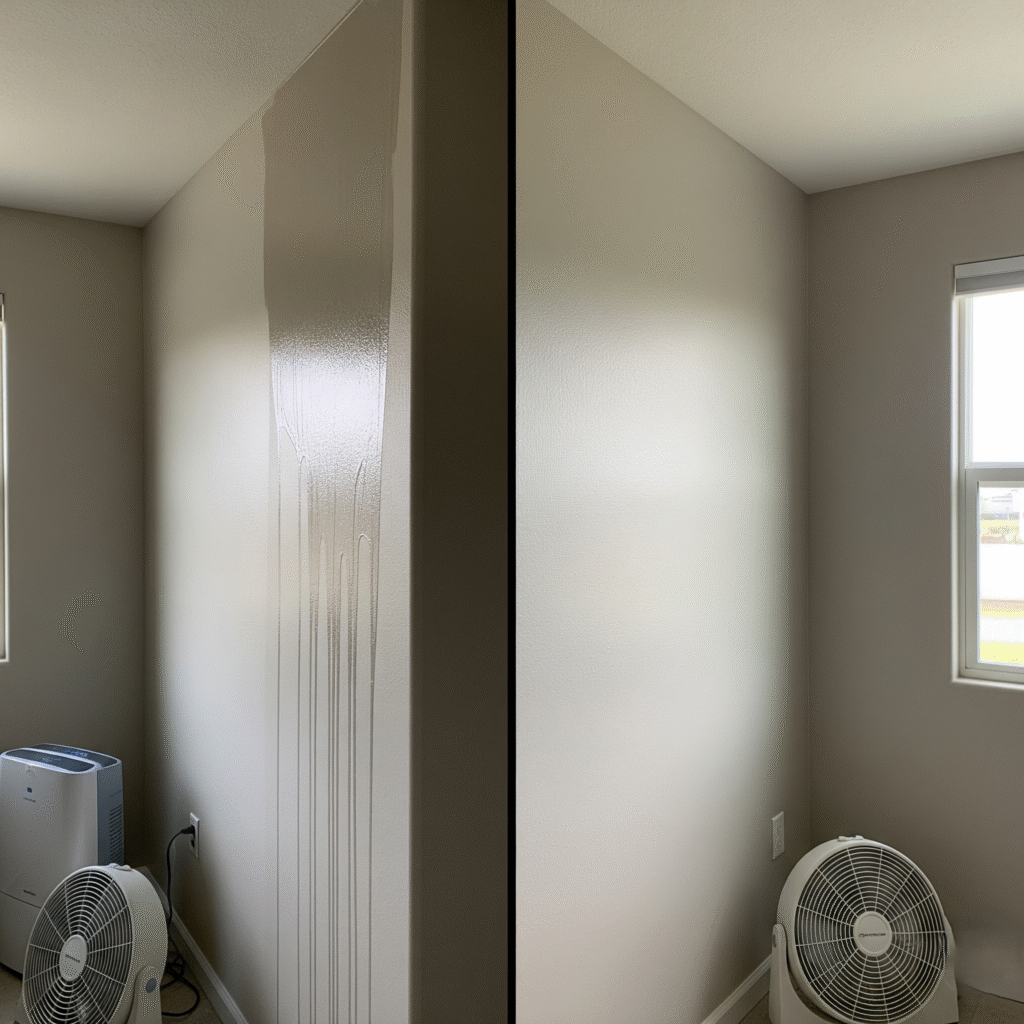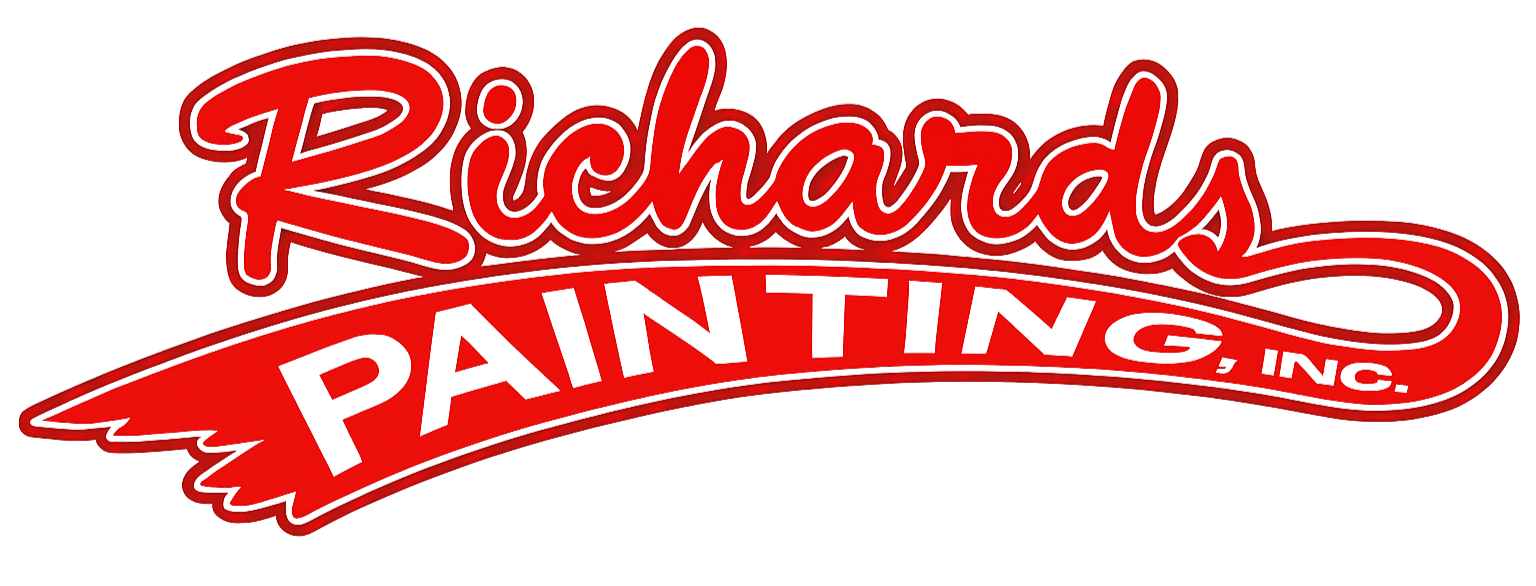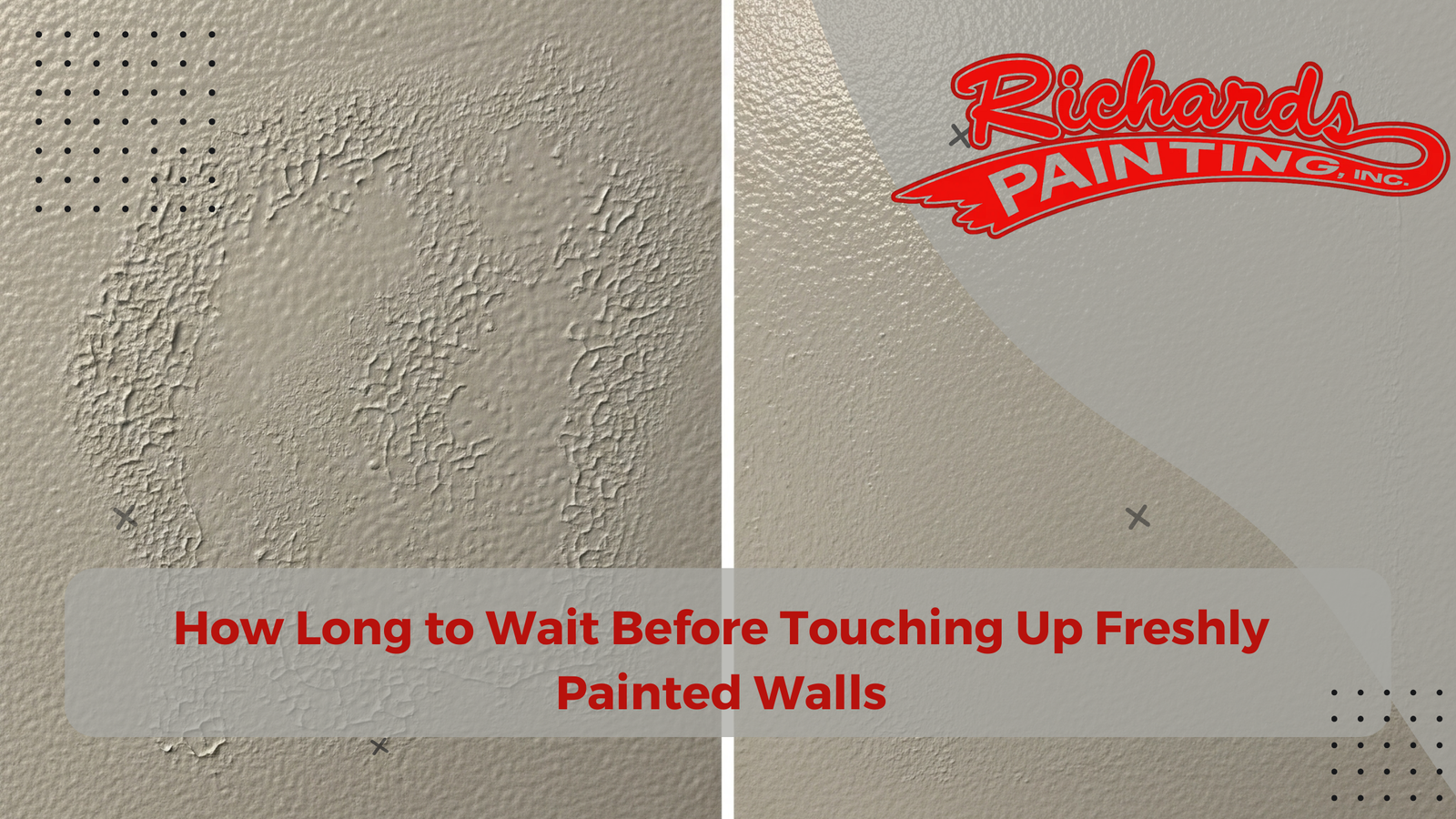Introduction
You’ve just finished painting your walls, the color is perfect, the finish looks flawless, and you’re feeling accomplished. But then, you notice a tiny smudge, an accidental scratch, or maybe a spot you missed. The instinct is to grab a brush and fix it right away. However, touching up freshly painted walls too soon can ruin the entire finish. Understanding when and how to perform touch-ups is crucial to maintaining the quality of your paint job. In this guide, we’ll explore How Long to Wait Before Touching Up Freshly Painted Walls in the Greater Sacramento Area.
Why Timing Matters After Painting Walls
Paint needs time to dry and cure properly. While a wall may feel dry to the touch within hours, it doesn’t mean it’s fully cured. Touching up too soon can cause uneven texture, discoloration, or paint lifting. If we don’t match up the timing, then it won’t last as long, and a lot of money can be wasted.
Drying vs. Curing
- Drying time refers to how long it takes for the surface of the paint to no longer feel wet.
- Curing time means the paint has reached its maximum hardness and durability.
Different paints and environmental conditions affect both of these times.
General Guidelines for Paint Drying and Touch-Up
Latex (Water-Based) Paint
- Dry to touch: 1-2 hours
- Ready for second coat: 4-6 hours
- Touch-up time: Minimum 24 hours, ideally 48 hours
Oil-Based Paint
- Dry to touch: 6-8 hours
- Ready for second coat: 24 hours
- Touch-up time: Minimum 72 hours
Environmental factors like humidity, ventilation, and temperature can increase drying time.

Signs That It’s Safe to Touch Up Your Walls
Before applying any touch-ups, look for the following signs:
- The paint feels completely dry to the touch and not tacky.
- The paint’s color looks consistent (no wet/dry patches).
- The room has had sufficient time with ventilation to aid drying.
- You’ve waited at least 24-48 hours for water-based paint, 72 hours for oil-based.
Tips for Successful Touch-Ups
1. Use the Same Paint Batch
Use paint from the same can or batch to maintain color consistency.
2. Stir the Paint Thoroughly
Even if it’s the same paint, make sure to stir it well for uniform pigmentation.
3. Use the Same Application Tool
If you rolled the wall, don’t use a brush for the touch-up; use a small roller instead.
4. Feather the Edges
Blend the touch-up paint slightly beyond the damaged area to avoid noticeable patches.
5. Lightly Sand Before Touching Up
Use fine-grit sandpaper to smooth out rough spots or dried drips before reapplying paint.
Common Mistakes to Avoid
- Touching up before the paint has dried completely.
- Using mismatched paint (wrong sheen, color, or brand).
- Overloading your brush or roller causes a blotchy texture.
- Ignoring surface prep, especially dust or residue.
How to Prevent the Need for Touch-Ups
While occasional touch-ups are unavoidable, you can reduce their frequency by:
- Letting furniture and objects stay away from the wall for 72+ hours.
- Avoid high moisture and traffic in the room while the paint cures.
- Applying two full coats for durability.
When to Repaint Instead of Touch Up
If the wall has widespread scuffs, stains, or inconsistent color fading, it’s better to repaint the whole wall. Touch-ups are best for small, localized areas.
Conclusion
Touching up freshly painted walls isn’t just about fixing a blemish; it’s about timing and technique. Wait at least 24–72 hours, depending on the paint type, and follow the best practices for seamless results.
Call-to-Action
Doing it right will preserve the integrity of your paint job and ensure your walls continue to look their best for years to come. Contact us today!






